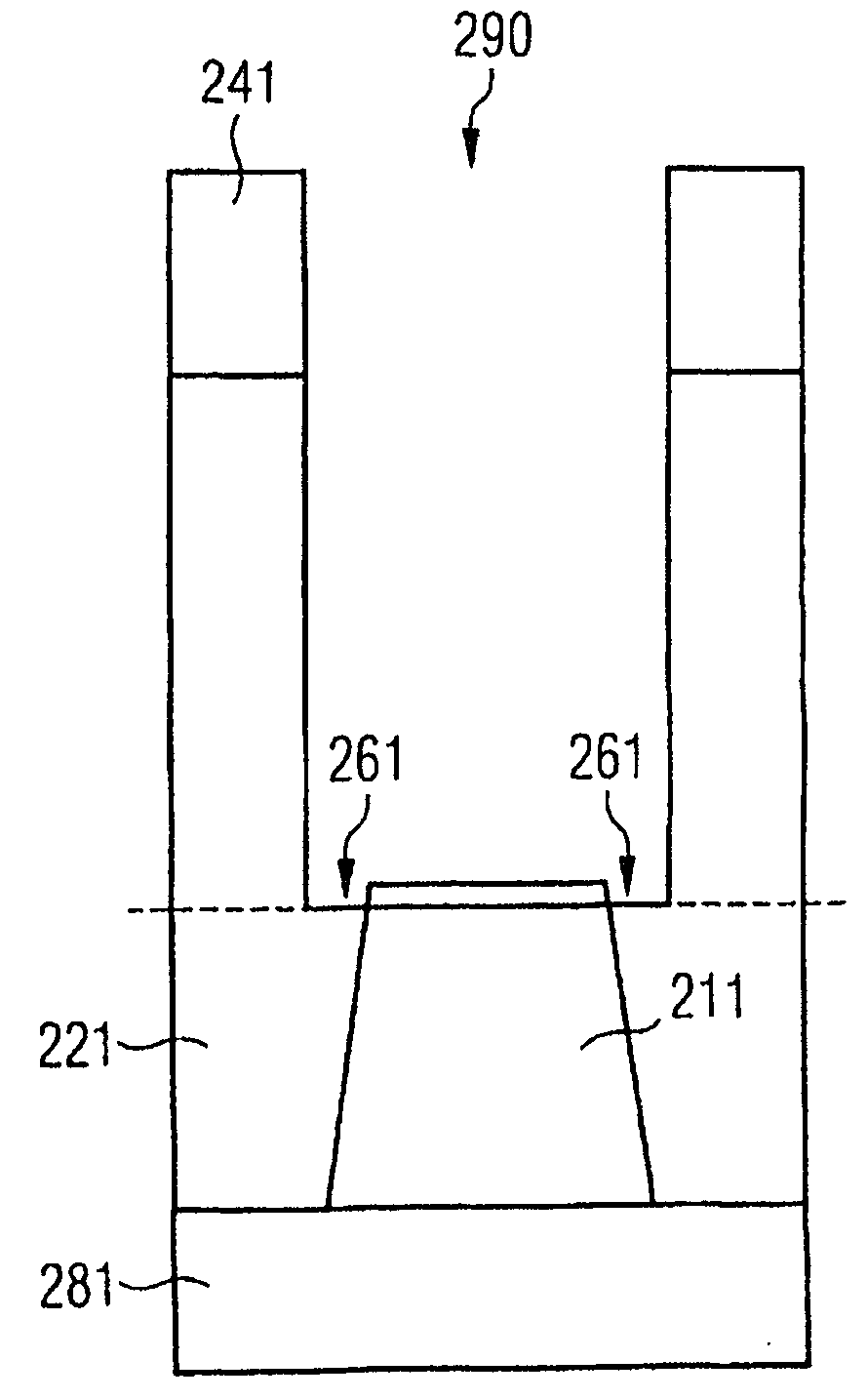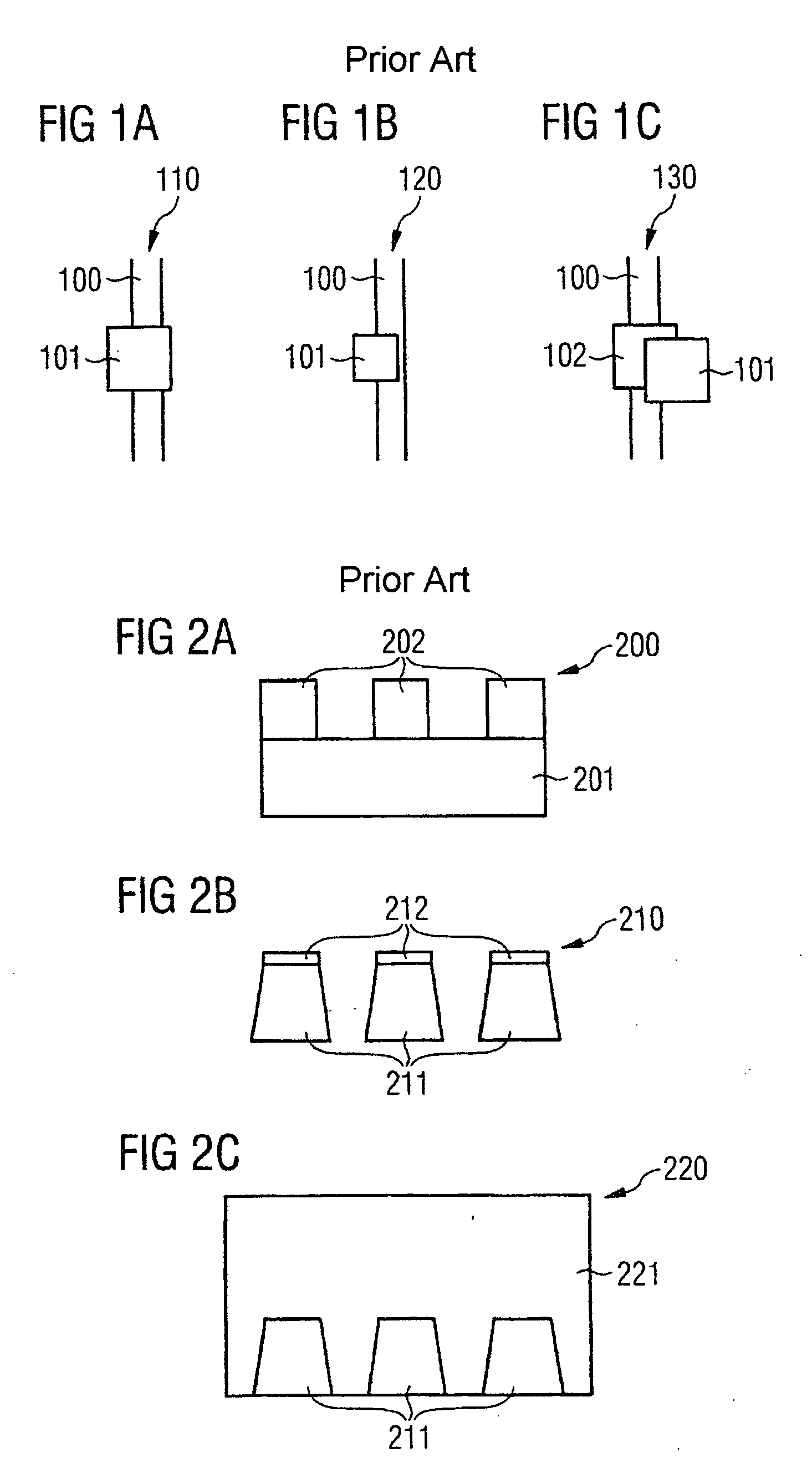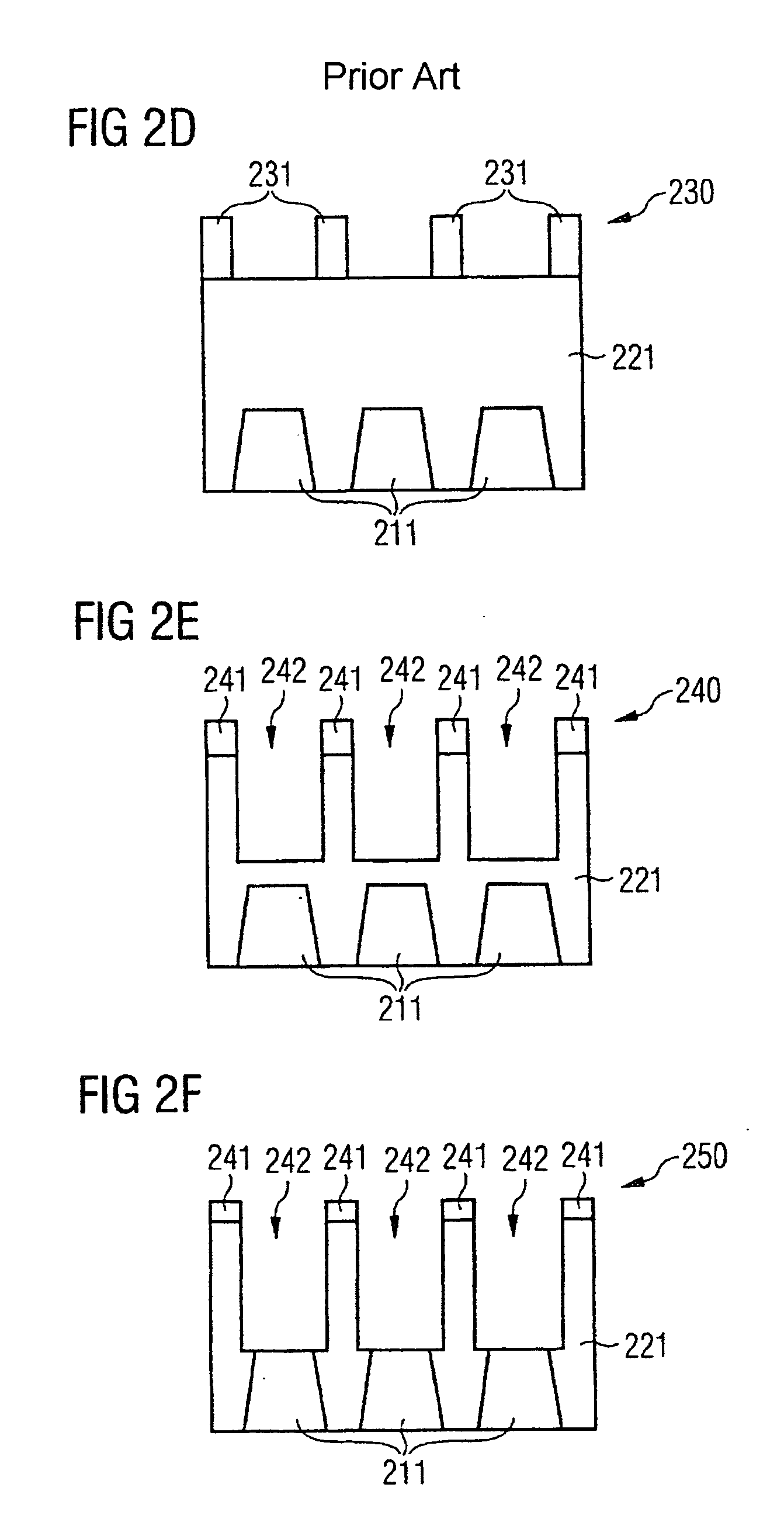Method for producing a layer arrangement
a layer arrangement and manufacturing method technology, applied in the direction of semiconductor/solid-state device manufacturing, basic electric elements, electric apparatus, etc., can solve the problems of high chip area cost, inability to optimally patterned, and interrupt the routing in the design, so as to improve contact
- Summary
- Abstract
- Description
- Claims
- Application Information
AI Technical Summary
Benefits of technology
Problems solved by technology
Method used
Image
Examples
Embodiment Construction
[0069]In the further text, a method for producing a layer arrangement according to a first exemplary embodiment of the invention is described with reference to FIG. 3A to FIG. 3H.
[0070]To obtain the layer sequence 300 shown in FIG. 3A, an aluminum layer 301 is formed on a silicon substrate (not shown) by using a conformal deposition process. On the aluminum layer 301, a silicon nitride sacrificial layer 302 is deposited conformally by using a CVD process. As an alternative, such a sacrificial layer can also be formed of silicon oxynitride material. On the silicon nitride sacrificial layer 302, photoresist material is formed and patterned to form a photoresist mask 303 by using a lithography process and an etching process.
[0071]To obtain the layer sequence 310 shown in FIG. 3B, the aluminum layer 301 and the silicon nitride sacrificial layer 302, starting from the layer sequence 300 shown in FIG. 3A, are patterned jointly, i.e. in an associated method step, by using an etching proces...
PUM
 Login to view more
Login to view more Abstract
Description
Claims
Application Information
 Login to view more
Login to view more - R&D Engineer
- R&D Manager
- IP Professional
- Industry Leading Data Capabilities
- Powerful AI technology
- Patent DNA Extraction
Browse by: Latest US Patents, China's latest patents, Technical Efficacy Thesaurus, Application Domain, Technology Topic.
© 2024 PatSnap. All rights reserved.Legal|Privacy policy|Modern Slavery Act Transparency Statement|Sitemap



